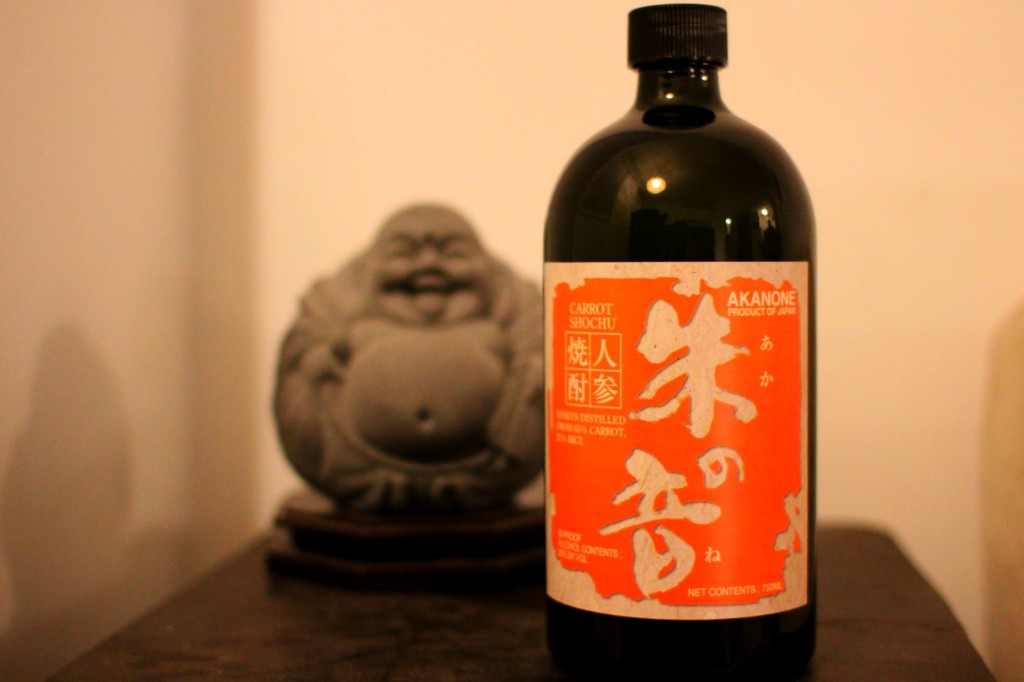Brand: Akanone Ninjin (朱の音)
Distillery: Kenjou Co, Ltd.
Location: Miigun, Fukuoka Prefecture, Kyushu Island, Japan
Grain: 65% carrot & 35% rice (kome)
Koji: unknown (black suspected)
Distillation: low pressure
Alcohol: 24% (48 proof)
Price: $$$
Tasting Notes
Distilled carrots? What will the Japanese think of next?
When I first heard of Akanone I was skeptical. It seemed gimmicky. I also wasn’t in any hurry to try it. But in a fit of adventure on my first visit to Mitsuwa Market in Edgewater, New Jersey, I decided to spring for a bottle. It then sat in the back of my liquor cabinet for several months. The orange label appealed, but the CARROT SHOCHU did not. Don’t get me wrong. I like carrots. I just wasn’t sure I wanted to drink them.
Akanone is made from carrots local to the Fukuoka Prefecture on Kyushu Island. Carrots grown on the banks of the Chikugo River in the Northern part of the island. As with most (all?) honkaku shochu, there is a dedication to craft that comes through in the drinking experience.
The nose is alternately fresh dirt and freshly cut carrots. Faint. Mellow. The initial mouthfeel is warm and sweetly verdant – a rich vegetation. The sweetness lingers before giving way to a refreshingly earthy butterscotch finish. If these sound like fantastical terms to describe a shochu, they are. And they’re deserved. Akanone is as unique as it is strange.
The Verdict: Highly Recommended
I’m not sure Akanone is ever going to be popular in the States except as a novelty. Not because it’s not good, because it’s so different from what Americans expect from a spirit. It’s richly flavorful, earthy, and sweet. It’s a mouthful, but never overwhelming like some of the bigger imos or Awamori. After trying it a variety of ways, I think I prefer it neat, which I don’t say about many shochus. If you’re up for an adventure, give Akanone a go – just don’t make it sit in your liquor cabinet as long as I did. Highly Recommended.
Kampai!
Akanone Buddha photo by Claire Wang


I love Akanone! I drink it on the rocks.
I would really like to try Ninjin shochu. I’m contacting Mitsuwa in Chicago to see if they can get it.
Unfortunately, I’m pretty sure Akanone Ninjin has left the US market.
Do you know if it’s possible to get this shipped in the United States? We brought it home from duty free in Japan once but have never been able to find it again.